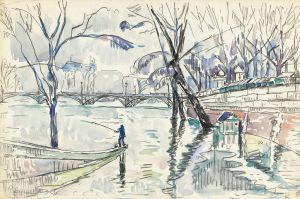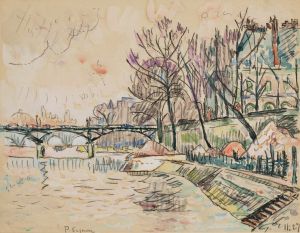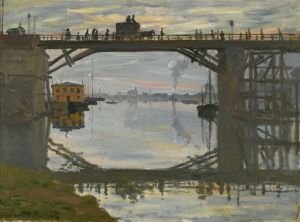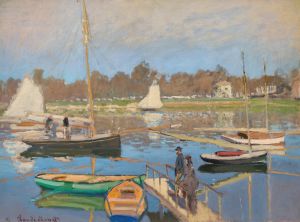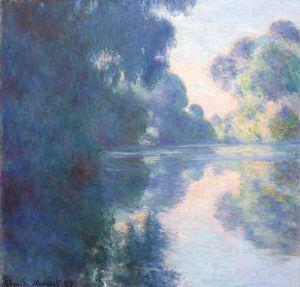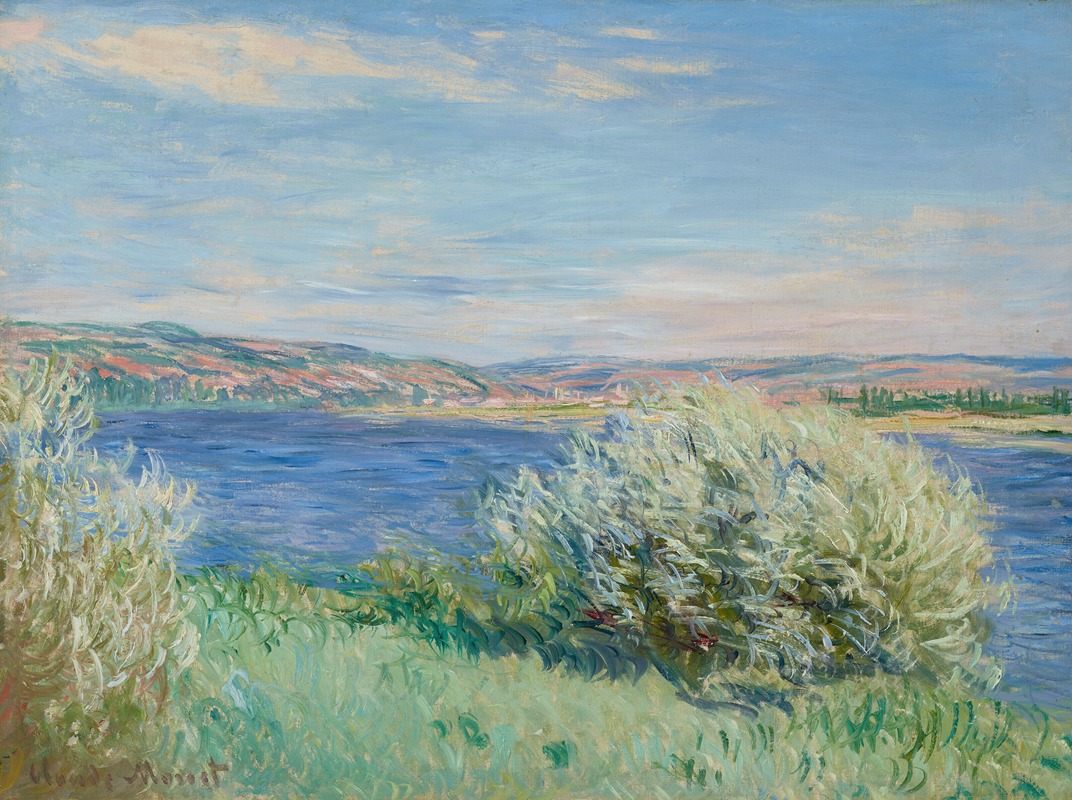
Les bords de la Seine près de Vétheuil
A hand-painted replica of Claude Monet’s masterpiece Les bords de la Seine près de Vétheuil, meticulously crafted by professional artists to capture the true essence of the original. Each piece is created with museum-quality canvas and rare mineral pigments, carefully painted by experienced artists with delicate brushstrokes and rich, layered colors to perfectly recreate the texture of the original artwork. Unlike machine-printed reproductions, this hand-painted version brings the painting to life, infused with the artist’s emotions and skill in every stroke. Whether for personal collection or home decoration, it instantly elevates the artistic atmosphere of any space.
Les bords de la Seine près de Vétheuil (The Banks of the Seine near Vétheuil) is an oil painting created by the French Impressionist artist Claude Monet in 1880. This work is part of Monet's extensive exploration of the Seine River and its surrounding landscapes, a recurring theme in his oeuvre. Painted during his time in Vétheuil, a small village along the Seine in northern France, the artwork reflects Monet's deep connection to the natural environment and his innovative approach to capturing light and atmosphere.
Monet moved to Vétheuil in 1878 with his family and lived there until 1881. This period was marked by both personal hardship and artistic growth. Despite financial difficulties and the illness of his wife, Camille, Monet continued to develop his Impressionist style, focusing on plein air painting and the effects of light on water, vegetation, and the sky. Vétheuil and its surroundings provided Monet with a rich variety of subjects, particularly the Seine River, which he depicted in numerous paintings.
In Les bords de la Seine près de Vétheuil, Monet employs his characteristic loose brushwork and vibrant color palette to depict the serene beauty of the riverbank. The painting captures the interplay of light and shadow on the water's surface, as well as the lush greenery along the banks. The composition is balanced yet dynamic, drawing the viewer's eye across the canvas and inviting them to experience the tranquil scene. Monet's use of short, broken brushstrokes and his focus on the effects of light and atmosphere exemplify the core principles of Impressionism.
The painting is notable for its ability to convey a sense of immediacy and intimacy, as if the viewer is standing on the riverbank alongside the artist. Monet's attention to detail and his ability to evoke the changing qualities of light and weather are evident in this work. The Seine, a central motif in many of Monet's paintings, serves as both a literal and symbolic element, representing the passage of time and the ever-changing nature of the world.
Today, Les bords de la Seine près de Vétheuil is recognized as an important example of Monet's work during his Vétheuil period. It is held in the collection of the National Gallery of Art in Washington, D.C., where it continues to be appreciated by art enthusiasts and scholars alike. The painting exemplifies Monet's mastery of Impressionist techniques and his enduring fascination with the natural world.





